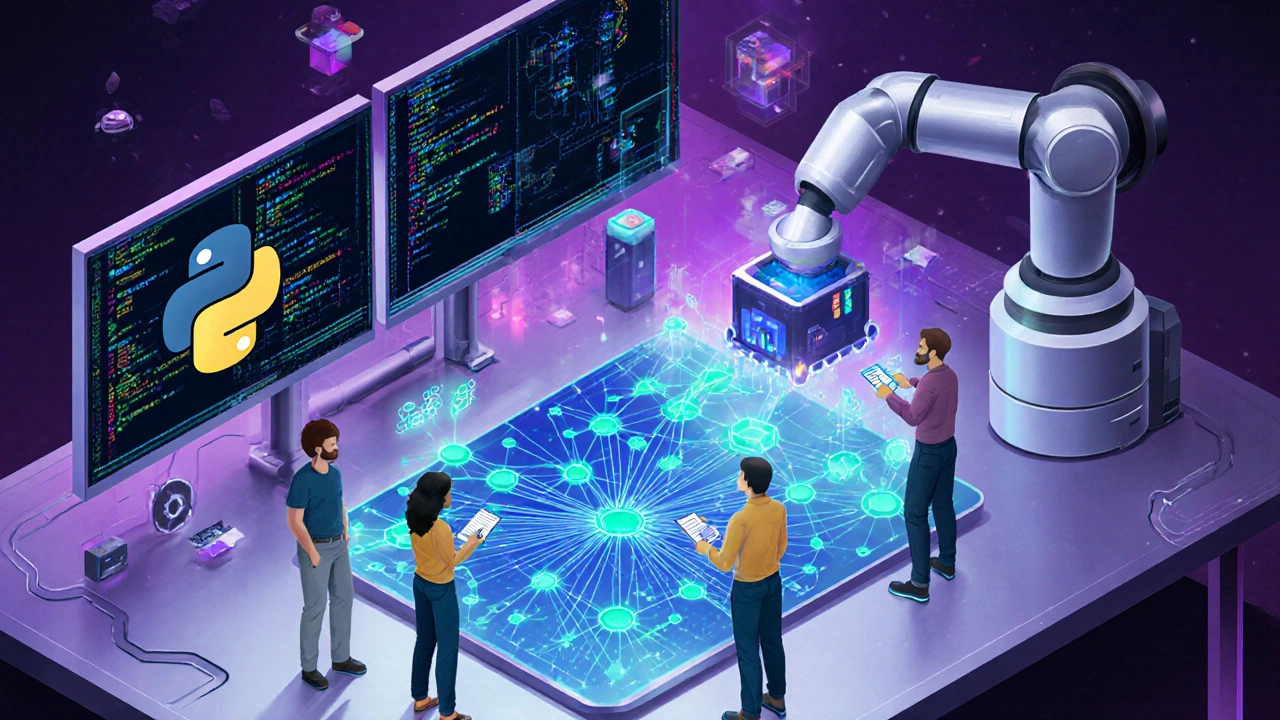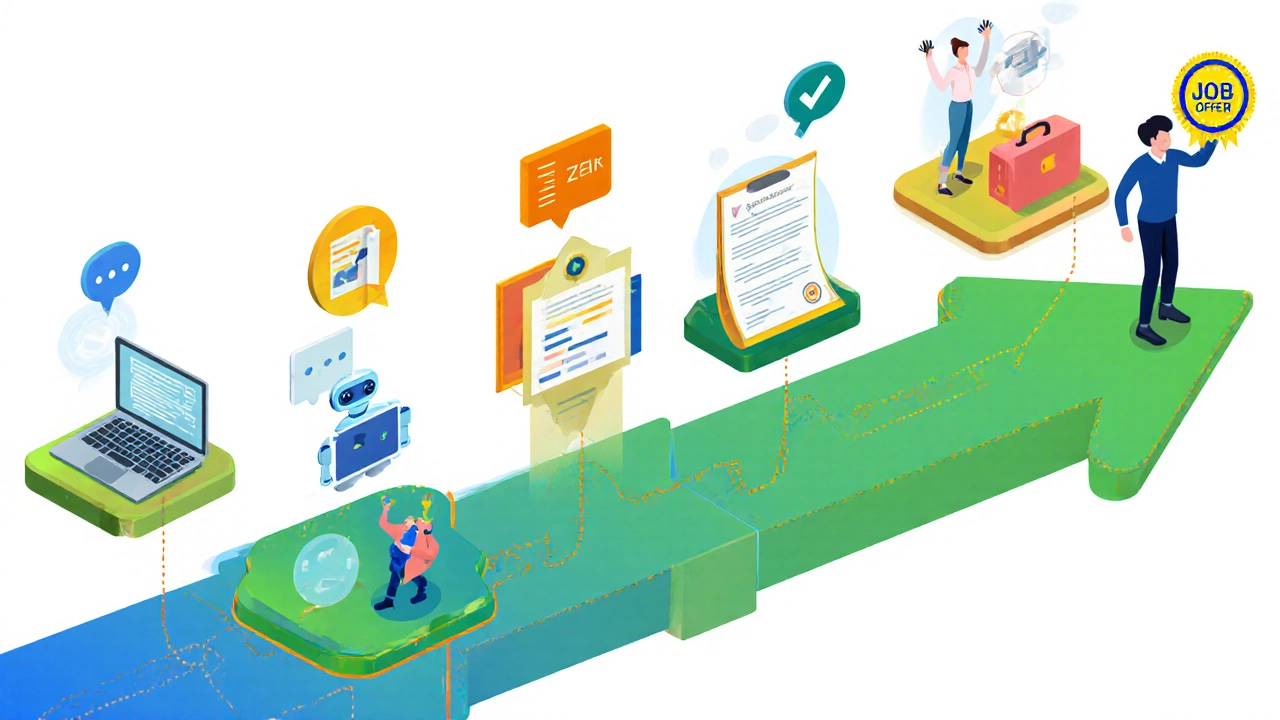Top Hiring Fields in 2025: Where to Upskill with Online Courses

Career Path Calculator
Find Your Best Career Match
Discover which in-demand field aligns with your skills and preferences. Based on 2025 hiring trends from Australian Bureau of Statistics and LinkedIn.
Looking for a career boost? In‑Demand Careers 2025 is a hot topic for anyone eyeing a job that actually hires right now. In this guide we’ll break down the sectors hiring fastest, why they matter, and which online courses can get you there faster than a semester on campus.
Why Hiring Trends Matter Today
Employers are constantly reshuffling priorities based on technology, regulation, and consumer demand. When a field spikes in hiring, it usually signals a talent shortage, meaning higher salaries, better perks, and faster promotion tracks. Ignoring these signals can leave you stuck in a stagnant role while peers zoom ahead.
Top Five Hiring Fields Right Now
Data from the Australian Bureau of Statistics, LinkedIn’s Economic Graph, and global job boards shows consistent growth across a handful of sectors. Below is a snapshot of the five fields that dominate hiring in Q3‑2025.
| Field | Median Salary (AUD) | Annual Growth Rate | Key Skills | Top Online Course Provider |
|---|---|---|---|---|
| Artificial Intelligence Engineering | 130,000 | 22% | Machine learning, deep learning, Python | Coursera |
| Cybersecurity | 115,000 | 18% | Network security, ethical hacking, risk assessment | edX |
| Data Science & Analytics | 112,000 | 17% | Statistical modeling, SQL, R/Python | Udacity |
| Cloud Computing (Architect/Engineer) | 125,000 | 20% | AWS/GCP/Azure, DevOps, infrastructure as code | LinkedIn Learning |
| Healthcare Technology | 108,000 | 15% | Health informatics, telemedicine platforms, regulatory compliance | FutureLearn |
Deep Dive: What Makes Each Field Hot
Artificial Intelligence Engineering is exploding because every industry-from finance to agriculture-is integrating predictive models. Companies are racing to embed AI in product pipelines, and they’re willing to pay premium wages for engineers who can build and scale models.
- Typical job titles: AI Engineer, Machine Learning Scientist, Deep Learning Engineer.
- Core certifications: TensorFlow Developer Certificate, AWS Certified Machine Learning.
- Fast‑track courses: Coursera’s “AI for Everyone” and “Deep Learning Specialization”.
Cybersecurity gained urgency after a series of high‑profile breaches in Australia’s energy and health sectors. Governments are tightening data‑privacy laws, pushing firms to hire more security analysts and ethical hackers.
- Typical job titles: Security Analyst, Penetration Tester, Security Operations Center (SOC) Engineer.
- Core certifications: CompTIA Security+, Certified Ethical Hacker (CEH), CISSP.
- Fast‑track courses: edX’s “Cybersecurity MicroMasters” and “Practical Ethical Hacking”.
Data Science & Analytics remains a versatile skill set. Companies need people who can wrangle messy data, derive insights, and communicate findings to executives.
- Typical job titles: Data Analyst, Data Scientist, Business Intelligence Developer.
- Core certifications: Google Data Analytics Professional Certificate, Microsoft Certified: Azure Data Scientist.
- Fast‑track courses: Udacity’s “Data Analyst Nanodegree” and “Machine Learning Engineer Nanodegree”.
Cloud Computing is the backbone of digital transformation. With hybrid‑cloud strategies becoming the norm, architects who can design secure, scalable environments are in high demand.
- Typical job titles: Cloud Solutions Architect, Cloud Engineer, DevOps Engineer.
- Core certifications: AWS Certified Solutions Architect, Google Cloud Professional Cloud Architect.
- Fast‑track courses: LinkedIn Learning’s “AWS Essential Training” and “Azure for Developers”.
Healthcare Technology blends clinical knowledge with software development. Telehealth adoption, electronic health records, and AI‑driven diagnostics fuel hiring across hospitals and startups alike.
- Typical job titles: Health Informatics Specialist, Clinical Data Engineer, Digital Health Product Manager.
- Core certifications: Certified Professional in Healthcare Information and Management Systems (CPHIMS), Google Cloud Healthcare API.
- Fast‑track courses: FutureLearn’s “Digital Health and Care” and “Health Informatics”.

How to Choose the Right Field for You
Every career move starts with self‑assessment. Ask yourself:
- Do I enjoy quantitative problem‑solving (AI, Data Science) or protecting systems (Cybersecurity)?
- Am I comfortable with continuous learning? Tech fields evolve fast.
- What lifestyle do I want? Cloud roles often involve on‑call duties, while analytics can be more project‑based.
Match your answers to the field attributes in the table above. If you lean toward creativity and user experience, consider branching into UX/UI design, a related high‑growth area not listed in the top five but still hiring fast.
Learning Path: From Zero to Hired in 6‑12 Months
Online courses make this transition realistic even if you’re starting from scratch. Here’s a proven roadmap that works for most high‑demand fields:
- Foundational Course: Pick a beginner‑level module on the chosen platform (e.g., Coursera’s “AI Foundations”). Complete it in 4‑6 weeks.
- Hands‑On Project: Build a portfolio piece-like a simple chatbot for AI or a vulnerability report for Cybersecurity.
- Specialization: Enroll in a mid‑level specialization (e.g., “AWS Solutions Architect” on LinkedIn Learning). Allocate 8‑10 weeks.
- Certification Exam: Schedule the relevant cert (e.g., CompTIA Security+). Study using official practice tests.
- Job‑Ready Resume: Highlight projects, certifications, and measurable outcomes. Use a template that aligns with ATS filters.
- Network & Apply: Join industry Slack groups, attend virtual meetups, and apply to at least 5 roles per week.
Most learners who follow this plan land a junior or associate role within 3‑6 months after certification.

Common Pitfalls and How to Avoid Them
- Skipping the fundamentals: Jumping straight into advanced topics leads to gaps that interviewers will spot.
- Choosing cheap courses without reputable instructors: Low‑quality content can waste months.
- Neglecting soft skills: Communication, teamwork, and problem‑solving rank high in hiring algorithms.
- Not building a portfolio: Resume‑only applications get filtered out; a GitHub repo or case study makes a difference.
Future Outlook: What’s Next After You’re Hired?
Hiring spikes are only the start. To keep climbing, stay ahead of emerging sub‑fields:
- AI: Generative AI, prompt engineering, and AI ethics.
- Cybersecurity: Zero‑trust architectures, cloud security posture management.
- Data Science: MLOps, data engineering pipelines.
- Cloud: Edge computing, serverless frameworks.
- Healthcare Tech: Wearable data integration, AI‑assisted diagnostics.
Set a habit of spending one hour a week on industry newsletters or webinars. Continuous upskilling keeps you marketable and opens doors to higher‑pay roles.
Frequently Asked Questions
Which field is hiring the fastest in 2025?
Artificial Intelligence Engineering leads with a 22% annual growth rate, followed closely by Cloud Computing and Cybersecurity.
Do I need a degree to break into these fields?
No. Employers increasingly value certifications and demonstrable projects over formal degrees, especially when you can show a solid portfolio from online courses.
How much can I expect to earn in the first year?
Entry‑level salaries range from AUD 85,000 in data analytics to AUD 100,000+ for junior AI engineers, depending on location and certifications.
What’s the best online platform for learning AI?
Coursera offers the most comprehensive AI Specialization, partnered with top universities like Stanford and DeepLearning.AI.
Can I switch careers after 5 years in a different field?
Absolutely. Many professionals pivot by leveraging transferable skills-project management, analytical thinking, and communication-and by completing a focused certification bootcamp.
Bottom line: the job market rewards those who act fast, learn smart, and showcase real results. Pick the field that aligns with your strengths, follow the structured learning path, and you’ll be positioned in the fastest‑hiring lane of 2025.

